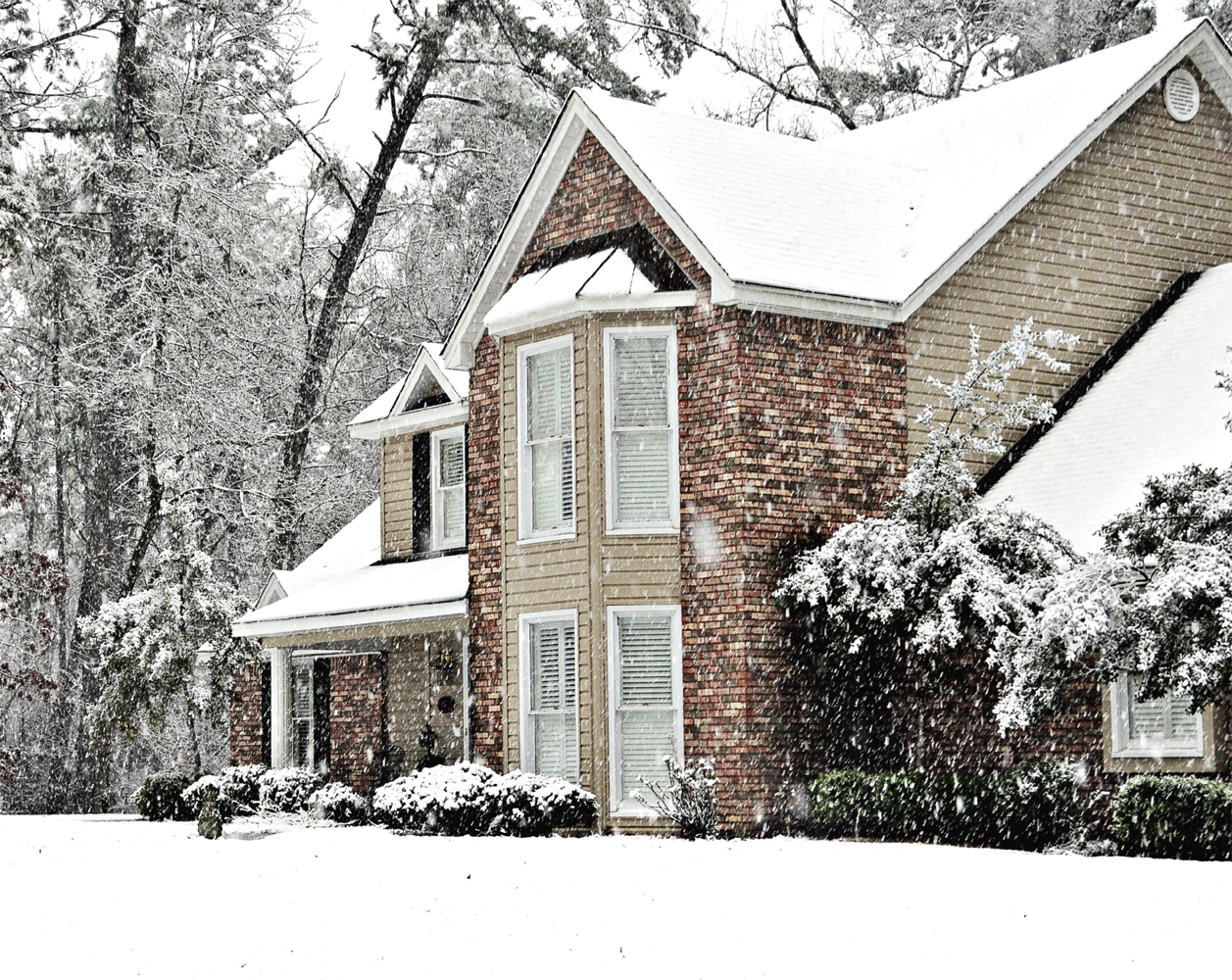Losing Energy

In extremely cold or warm months, homeowners see energy bills spike. This may be due to increased usage of their heating or cooling units, but it might also involve energy loss in other areas of the home. One proactive thing you can do is to get an energy audit, which helps identify issues around the home. It’s an important step toward recommended repairs or replacements that will improve efficiency.
FINDING THE CAUSES
House & Home spoke with several energy professionals about the most common causes and mis- takes causing homeowners problems. The main reason energy bills increase during winter is the loss of heat, with the culprits being “open leaks, bad weather stripping, drafts and non-insulated doors,” says Bob McManus, vice president at Door Boy.
When leaks occur, heating systems have to do double the work. “Energy bills spike during the winter season due to heaters (whether they’re old or new) working twice as hard to keep the room temperature comfortable,” says Robert Barufkin, sales manager of Tom Adams Windows and Carpets. “If you have drafty windows and doors with non-energy-efficient glass and non-insulated walls, the heat is literally leaving your home. You will constantly have the heaters running to make up the heat that is always escaping your home.”
The bulk of a home’s energy costs come from HVAC systems, and inefficient systems don’t help the situation.
“Heating and cooling costs the average homeowner nearly half of the home’s total energy bill,” says Pat Murray of Mount Laurel Heating & Cooling. The problems, he says, are many. “Improperly sized equipment (oversized equipment cycles frequently use higher energy levels to come on, while undersized equipment never cycles off and runs continuously). Other contributing factors include inefficient old equipment, the size and location of windows (windows on the south side add more heat to your home than windows on the north side), old thermostats, poor air flow due to lack of maintenance and filter changes and poor insulation,” explains Murray.

FIXING THE PROBLEMS
There are many things people can do to see where there are issues in their home, says McManus. “[Make a] simple visual inspection of your garage doors and entry doors to reveal gaps, leaks, damage,” he suggests. For McManus, “garage doors and entry doors usually have a 20- 25 year lifespan. Many doors last 30-40 years but do require repairs and service.”
Throughout the home, sealing and insulation should be checked. “In most houses, it’s lack of air sealing and insula- tion,” says Joe Simone, co- owner of The Insulation Heating & Cooling Group. “I always suggest starting in the attic. Then look into crawl spaces and the energy you’ll lose through windows and doors. Look into weather-stripping, [or putting] drapes over windows. If you have a programmable thermostat, use it the way it is intended. Don’t raise and lower it a great deal. Let the insulation do its job.”
Replacing weather-stripping is not labor intensive, but it is cost effective.
“Check the operation and all the weather-stripping on all of your windows and doors,” says Mike Chapman, owner of Chapman Windows Doors & Siding. “Typically, the weather-stripping is not a difficult part to replace,” he says. “Your windows and doors may have light and air leaking through, so replacing the weather-stripping would be the simplest solution. For windows, the key source to energy loss through windows is the locking mechanism; if it’s damaged or no longer working properly, it’s not going to prevent air movement,” he explains, adding that most windows he replaces are 10 to 25 years old. Doors have this lifespan, too, although he has had to replace some much younger doors because of frame rot, caused by water laying on the sill.
Older homes would also benefit from upgrading things like windows and doors since modern-day products are made with better technology.
“Technology is constantly changing. A high-end double- pane glass vinyl window with low efficiency on three sides of the panes can lower the U-Value (the lower the U-value the better the efficiency) to a .22, which is 45 percent better than an Energy Star U value of .30,” says Barufkin. “Today’s windows should offer 20-plus years efficiency. Today’s windows, doors, heaters and sidings can be 100 percent more efficient than the products of 20 years ago because of technology.”
Murray also offers suggestions. “Cover windows that get a large amount of sun in the summer and allow sunlight in during the winter to add heat gain to the home. Replace old thermostats with programmable stats to ensure comfort when you are in the house and save you money by lowering or raising temp while the home is empty. Change filters regularly to ensure good air flow, have your heater serviced every fall, and your condensing units services every spring,” he says.
Simone says to make sure your R-value of insulation is correct. “Insulation can get wet or animals can get into it and that can ruin it. Also, homes before the 1980s didn’t have the R-value we use today. But even more than that, it’s how it was installed. Having it installed properly is very important,” he says.
Tom Chiavaroli, Comfort Specialist for C&C Heating and Air, recommends investing in products with the “Energy Star Label,” which denotes items that are specifically geared to saving energy. “It breaks it down into categories, explains what federal tax credits might be available and connects you directly with any suppliers’ rebates,” he says. Chiavaroli adds that his company offers free tips, covering technology and savings among others, through its Home-sense pages.
CONSIDER AN ENERGY AUDIT
In order to really look into your home’s energy loss, get an energy assessment or audit by a certified building energy analyst. “The building analyst will perform a number of tests to locate gaps and leaks in your home [and] will prepare a report on specific ideas for improvement. This leads people to a direction other than a heater or air conditioner,” Chiavaroli says. “People think lack of performance is the system, but there are other aspects of the house that impact it. They use infrared devices and show you where you’re leaking energy. Some houses have inches or less insulation. That’s typical. You need 12 inches in the attic minimum. It’s the biggest problem with the least expensive alternative solution,” he says.
An audit can also determine if your equipment is equipped to handle the output of energy you need.
“Have a professional heat load calculation to determine proper sizing of equipment to ensure the most comfort in your home,” says Murray. “Upgrade to high-efficient equipment (heaters that are 80 percent efficient lose a minimum of .20 cents on every dollar spent while heaters that are 95 percent or higher lose only .05 cents or less on every dollar spent),” he says. “High-efficiency central cooling systems can save up to (and some- times over) 50 percent on your annual cooling energy cost.”
Energy audits have two important aspects, says Simone. “There’s energy efficiency and airsealing, but there’s also the safety category. The audit checks for gas leaks, mold, carbon monoxide and moisture. From that aspect alone, everyone should have an energy audit,” he says.
Murray advises other ways to get the most out of the audit. When you get your home evaluated, think of these things: How long will you be in the home? “How much are your current energy bills, temperature differences throughout the home, efficiency of current equipment verses new equipment, the direction the home sits, and the number and sizes of windows. High-efficiency equipment does not make sense for everyone, but for those who have high usage and high utility bills, they can benefit from the products available today,” he says.
RESOURCES
C&C Heating and Air
Souderton, Pa.
(800) 564-3382
CC-HVAC.com
Chapman Windows Doors & Siding
West Chester, Pa.
(610) 400-3382
ChapmanWindowsDoors.com
Door Boy
Berkeley Heights, N.J.
(908) 464-1440
DoorBoy.com
The Insulation Heating & Cooling Group
(formerly NJ-PA Energy Group)
Hammonton, N.J.
(609) 704-7040
TIGNJ.com
Mount Laurel Heating & Cooling, Inc.
(856) 722-7003
Mount Laurel, N.J.
MtLaurelHVAC.com
Tom Adams Windows & Carpets
Churchville, Pa.
(215) 357-7000
TomAdamsWC.com
Published (and copyrighted) in House & Home, Volume 17, Issue 7 (February, 2017).
For more info on House & Home magazine, click here.
To subscribe to House & Home magazine, click here.
To advertise in House & Home magazine, call 610-272-3120.


.jpg)


.jpg)

